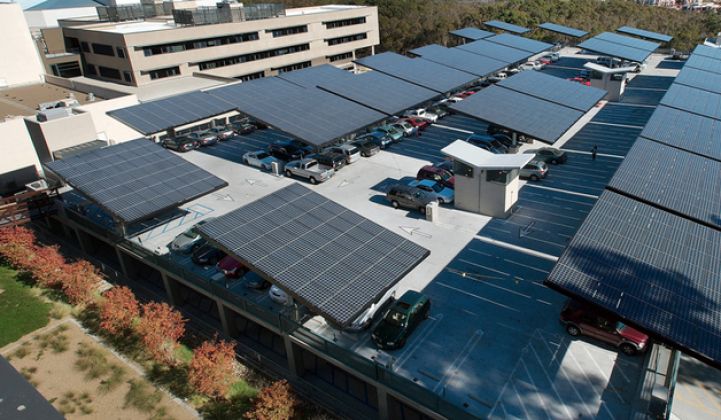All-renewable microgrids such as the one powering Borrego Springs are likely to remain scarce for years because of inverter shortcomings, according to an expert.
The current state of inverter technology makes it difficult to maintain microgrid stability once renewable energy generation surpasses around 40 percent of peak-power consumption on the system, explained Vicente Salas, associate professor at the Carlos III de Madrid University, speaking at the Microgrid Global Innovation Forum.
“Most manufacturers are focused on creating inverters for grid-connected systems,” he said. “Developing ones for microgrids isn’t like trying to build the atom bomb, but it could take time. It’s hard to say how long, but it could be five years for a commercial product.”
Designing equipment for isolated grids is already complicated because of the wide range of formats encompassed within the broad term "microgrid." Systems can range from less than 5 kilowatts to several megawatts, and contain a range of generation sources, potentially along with storage.
Where intermittent generation sources such as PV represent less than 20 percent of total consumption, most of the power for the system usually comes from gensets that operate continuously, Salas told an audience in Barcelona this month.
In these situations, PV merely reduces the diesel load and no particular supervisory control system is needed. At medium PV penetration levels of up to 65 percent of peak load, microgrid designers have the option of operating gensets continuously or intermittently.
In the first case, or if gensets are used intermittently with up to a 40 percent PV contribution and no energy storage, microgrids can still get away with relatively simple control systems.
But once PV penetration hits 40 percent, some form of energy storage becomes essential and more sophisticated control is needed. That isn’t easy, because the load keeps changing at the same time as the energy available from solar, Salas said.
In the absence of control systems, bidirectional inverters have to balance power coming in from PV with that going to users and batteries. Current inverters aren’t up to it. As a result, current high-PV-penetration microgrids still tend to rely heavily on diesel generation.
In the microgrid supplying power to Banggi Island in Malaysia, for example, 1.2 megawatts of PV and 2.9 megawatt-hours of battery storage supplement one 350-kilowatt and two 500-kilowatt generators.
In the Malaysian coastal community of Tanjung Labian, meanwhile, a 1.2-megawatt PV plant forms part of a microgrid that includes 4.3 megawatt-hours of storage and more than 1.2 megawatts of diesel generation.
Malaysia boasts other microgrids with high renewable energy penetration, including Bario, with 906 kilowatts of PV, 3.9 megawatt-hours of batteries and 1.4 megawatts of diesel, as well as Kema, with 850 kilowatts of solar, 4.8 megawatt-hours of battery storage and 1.6 megawatts of genset generation.
At the world’s largest PV-diesel hybrid microgrid, in Cobija, northern Bolivia, 16 megawatts of diesel generation are used alongside 5 megawatts of PV and 1.2 megawatt-hours of Saft Intensium lithium-ion battery storage, with control coming from four SMA Sunny Central Storage 630 inverters.
According to another Microgrid Global Innovation Forum presenter, David Cruanyes, an application engineer at SMA Solar Technology, there is a clear business case for PV and diesel hybrid systems in high-irradiation regions where diesel costs more than $1.00 a liter.
PV can generate savings of more than $0.21 per kilowatt-hour compared to continuously operated gensets running on diesel at $4 per gallon, he calculated.
At present, maximizing these benefits further may be difficult because of the limitations of inverter technology -- although San Diego Gas & Electric (SDG&E) has at least demonstrated that renewables-only microgrids can function for short periods of time with the right control systems.
In late May, SDG&E avoided an interruption of service to its Borrego Springs customers as a result of planned grid maintenance, by providing them electricity from a microgrid based around a nearby 26-megawatt PV power plant for nine hours.
“The microgrid generated the majority of power during this time from the large Borrego Solar facility, using batteries and traditional distributed generation to ‘follow the load’ and fill in gaps created by the solar facility,” reported SDG&E.



